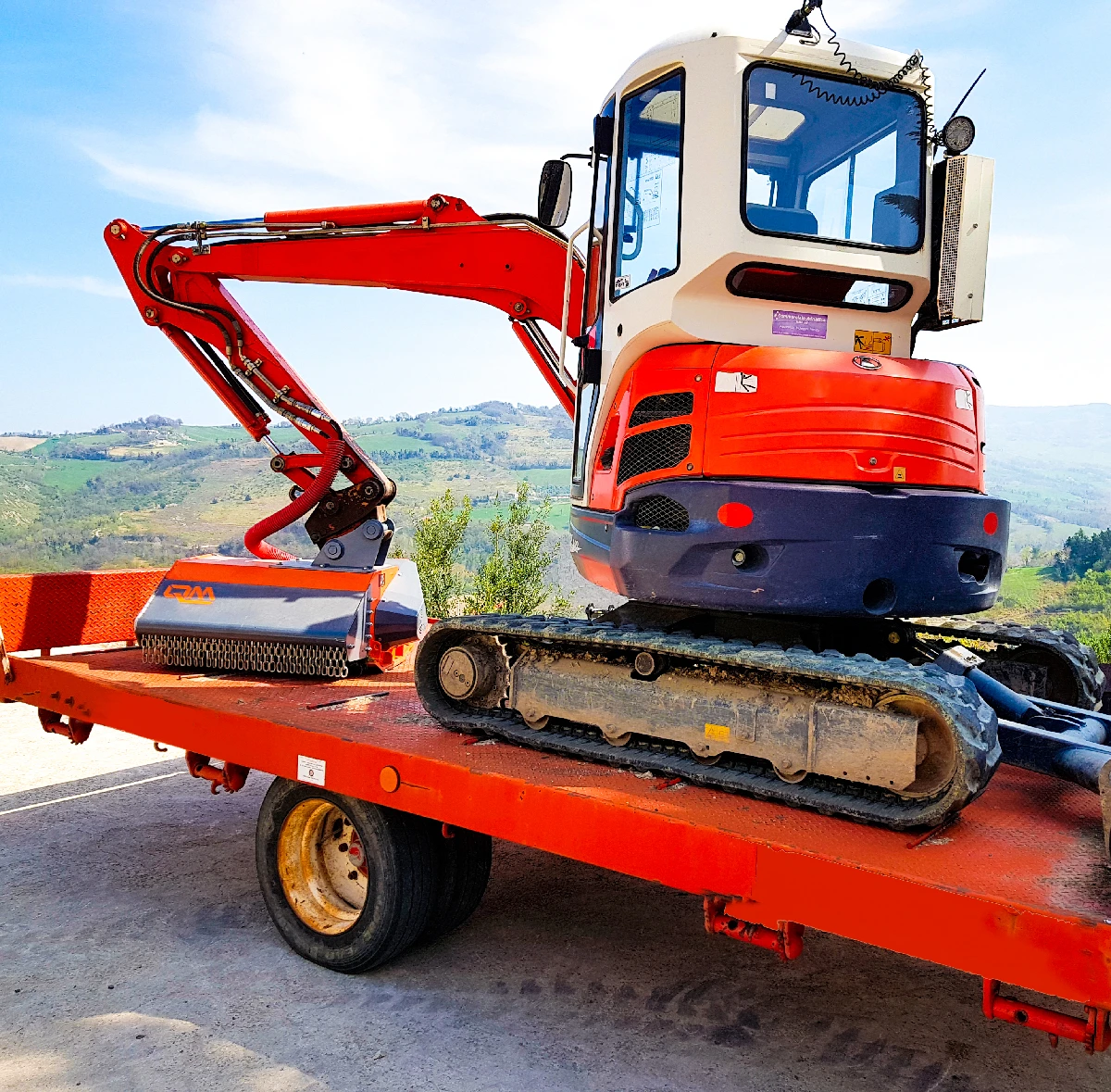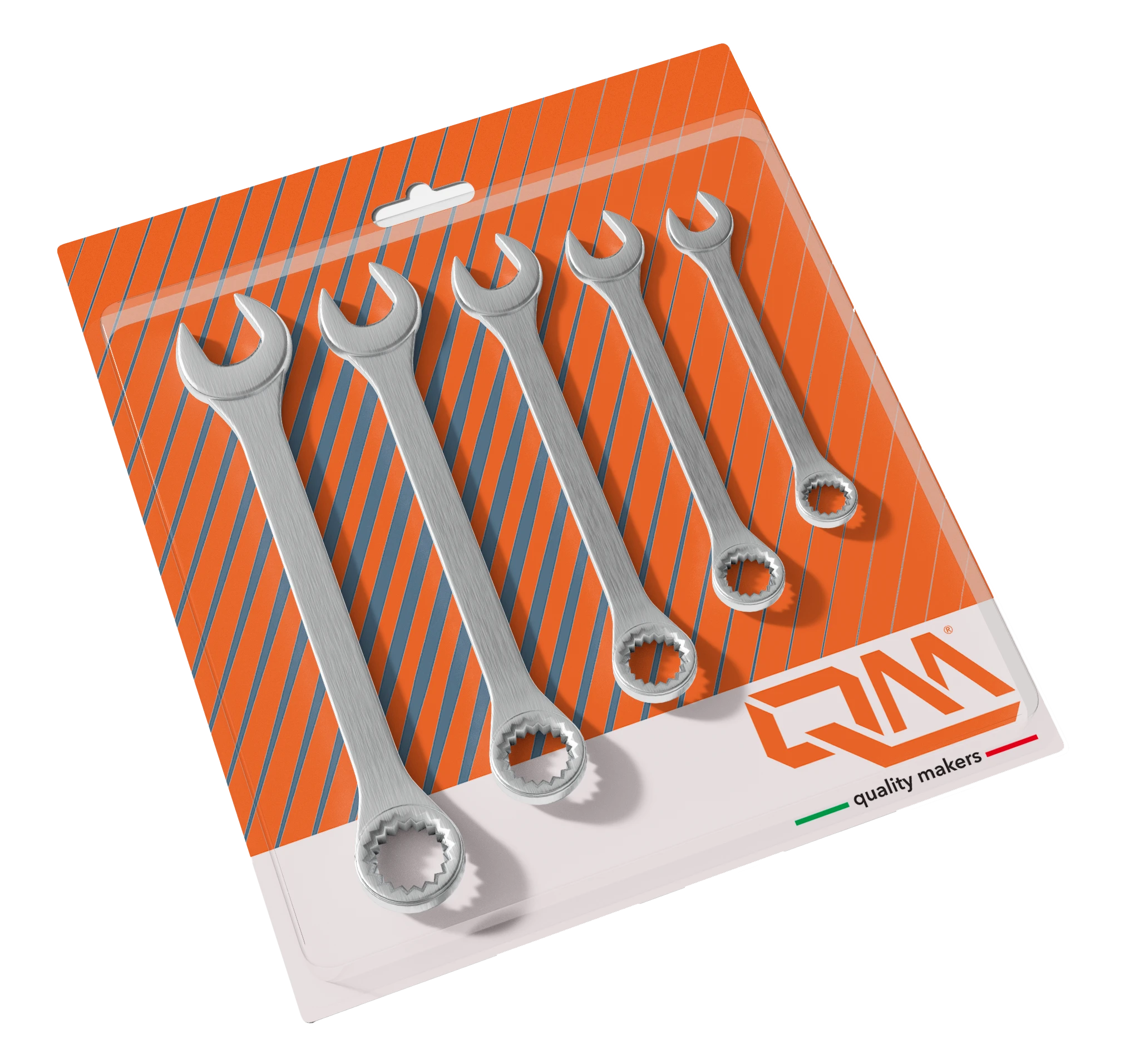MINI EXCAVATOR MULCHER: 5 TIPS TO AVOID BAD SURPRISES
Mini-excavators are versatile and valuable machines in multiple sectors, from agriculture to forestry and even in construction, when land needs to be cleared and prepared to make it perfectly buildable. The combination of a mini-excavator and a mulcher is a winning combination for tackling land clearing and maintenance jobs in an efficient and versatile way. However, to fully exploit the potential of this equipment and prevent unpleasant mishaps, it is essential to take an informed approach and properly inform yourself about its possible uses and safe and guaranteed use. In this article, we will explore five key tips for using the mini-excavator mulcher effectively and sustainably.

1. Choosing a mulcher: a wise investment
Choosing the right mulcher is the critical first step in ensuring optimal results and a smooth operating experience. This decision cannot be made lightly, but requires careful consideration of several crucial factors.
- Working width. The working width of the mulcher should be proportionate to the size of the mini-excavator and appropriate for the areas in which it is intended to operate. A mulcher that is too wide may be cumbersome and difficult to maneuver in tight spaces, while a mulcher that is too narrow may require excessively long working times. It is important to strike the right balance between efficiency and maneuverability.
- The mini-excavator. Another determining factor is compatibility with the mini-excavator to ensure efficient operation and prevent problems that could damage the equipment. In this regard, it is advisable to turn to manufacturers and/or dealers who provide direct customer support and allow their product to be applied to virtually any operating machine.
- Vegetation type. Another factor to consider is the type of vegetation you intend to tackle. There are specific mulchers for grass, brush, shrubs, and even small trees. Each type of vegetation requires a different type of tines and a different configuration of mulcher. Using a mulcher that is not suitable for the type of vegetation can compromise the effectiveness of the work and cause damage to the machine.
- Quality. Opting for quality products is a long-term investment. A quality mulcher provides durability, consistent performance and greater resistance to wear and tear. Although the initial cost may be higher, a quality mulcher will pay for itself over time because of its reliability and reduced maintenance costs.
2. Regular maintenance: the key to longevity
Proper maintenance is very important to preserve the efficiency of the mulcher, prevent sudden breakdowns and prolong its service life. Regular maintenance not only ensures optimal performance, but also contributes to the safety of the operator and the surrounding environment.

- Cleaning. After each use take time to clean the mulcher. Remove debris, grass, leaves and any other accumulated plant material to prevent clogging and corrosion. Thorough cleaning also ensures that the mulcher is ready for its next use without compromising its performance.
- Inspection of wear parts. The tines or mallets of the mulcher are components subject to wear and tear due to constant contact with vegetation. It is important to check them regularly and replace them when necessary. If worn or damaged, they can impair cutting effectiveness and cause excessive vibration that can damage both the mulcher and the mini-excavator.
- Lubrication. Regular lubrication of pivot points, bearings and moving parts is essential to prevent wear and ensure smooth operation. Use the manufacturer’s recommended lubricant and follow the specific instructions for lubricating the mulcher.
- Hydraulic control. Oil is the vital fluid that powers the hydraulic system to operate the mulcher. Checking its level and quality periodically is essential to ensure optimal operation and prevent damage to the system. Usually a well-made equipment has no oil consumption. Normally, the lubricant is changed once a year, depending also on whether the machinery is used heavily or not. However, if in the meantime the oil appears contaminated or the level is low, proceed to replace or refill according to the manufacturer’s instructions.
3. Proper use: efficiency and safety
Proper use of the mulcher is essential not only to achieve optimal results, but also to ensure operator safety and prevent damage to the machine. Improper use of the mulcher can cause accidents, reduce work efficiency and shorten the equipment’s service life.
- Forward speed. The forward speed of the mini-excavator must be adapted to the density of vegetation. Advancing too fast in dense vegetation can cause jams, overloading and damage to the mulcher. It is important to strike the right balance between speed and cutting efficiency.
- Cutting height. The cutting height should be adjusted according to the type of vegetation and the desired result. Too low a cutting height can cause damage to the soil and plant roots, while too high a cutting height can leave unwanted residue.
- Terrain inclination. Working on sloping terrain requires special care. Excessive slope can affect the stability of the mini-excavator and increase the risk of overturning. It is important to operate with caution and take necessary precautions to ensure safety.
- Obstacles. Before starting work, carefully inspect the area and identify any obstacles such as rocks, stumps, fences or other objects that could damage the mulcher. Avoid contact with these obstacles or take necessary measures to protect the mulcher. Never use the Flail Mower for excavation or demolition in construction as you would seriously risk damaging it irreversibly.
Variable costs: the dynamics of utilization
They are closely related to the actual use of the forestry mulcher and can fluctuate according to the intensity and type of work performed. The main variable costs to be considered include:
- Fuel. fuel consumption is one of the most significant cost items, especially for large machines. In our case, considering an average consumption of 20 liters per hour for a 20-ton excavator engaged in chopping work, and the current price of diesel fuel, this represents a considerable operating cost.
- Maintenance. Routine maintenance, mainly includes weekly lubrication with about 1 kg of grease at a cost of 8€/kg to ensure proper operation and longevity of the machine. In addition, it is a good idea to budget for any extraordinary maintenance or unexpected repairs.
- Transportation costs. If you plan to move the forestry mulcher frequently from one site to another, transportation costs, including fuel and operator time, should be included in the operating budget. For a 20-ton excavator, the transportation cost can average between 800 and 1,000 euros per trip.
- Hydraulic oil. The forestry mulcher uses the excavator’s hydraulic oil, which usually does not require periodic topping up but rather a complete annual replacement. With a replacement of about 200 liters, it costs around 1,000 euros. Consequently, the hourly cost of hydraulic oil is about 0.48€.
- Operator cost: the operator’s hourly wage, including any contributions and allowances, is around €25 per hour and is a significant variable cost to consider.
- Replacement teeth. Forestry mulcher teeth are subject to wear and tear and need to be replaced periodically, usually every two years at most. With 32 teeth at a cost of 55€ each, the total cost of replacement teeth is 1,760€. Periodic replacement of tines is essential to maintain machine efficiency and reduce fuel consumption. A forestry mulcher with standard use, for which this expense will be faced every two years, will generate an hourly cost of about 0.42€ for replacement tools.
Benefits and final considerations
Despite the operating costs, the use of a forestry mulcher offers many advantages, including theaupping productivity. In fact, the forestry mulcher makes it possible to carry out land clearing and maintenance work quickly and efficiently, reducing work time and definitely increasing overall productivity. Another strong point is the versatility. This machine can be used for a wide range of applications, from clearing forested areas to preparing the ground for new plantations. Finally, the security. The forestry mulcher makes it possible to work in total comfort, preferring to safeguard the operating personnel, even in areas that are difficult to access or have steep slopes, and significantly reduces the risk of work accidents.
In Conclusion.
In conclusion, evaluating the operating costs of a forestry mulcher is a key step in ensuring efficient and profitable use of this machine. By carefully considering both fixed and variable costs, and comparing them with the benefits offered by the machine, you will be able to optimally consider and plan your investment.
Remember that every situation is unique and operating costs may vary depending on your specific needs and working conditions. Therefore, we recommend that you always consult with industry experts or, better yet, the forestry mulcher manufacturer to get a personalized and timely estimate of costs and benefits.
